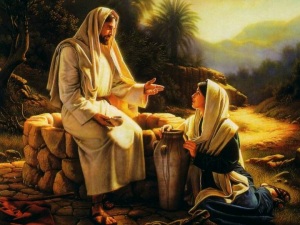“Are You the One?”
Matthew 11:2-11
December 15, 2019, Boeuff Presbyterian Church
“Surprise!” It’s a common movie and tv trope, I’m sure you’ve seen it: a room full of people all prepared to surprise a guest of honor and then someone else comes in right before. And the moment is ruined, the good surprise used up.
Reading our text this week a scene of a ruined surprise came to mind. John asks the question, “are you the one who is to come, or are we to wait for another?”
The messiah, after all, had been greatly anticipated. Not just for a few minutes of people crouched behind a couch ready to welcome a guest of honor, but for hundreds of years. And the people really didn’t want to be wasting the good welcome, the good celebration for some person who wasn’t the messiah.
Today is our Advent week of Joy, but unlike the other lectionary texts that highlight Mary’s Magnifcat, her song of great joy at learning she is to be the mother of Christ, this passage is much more tempered. It’s trying to decide if there’s something to be joyful about. It’s cautious, wary of getting too excited.
There is so much in this world that tempers our joy, environmental crisis, divisive politics, and social unrest. In this polarizing world, we are wary of that which doesn’t come right out and identify itself. “Are you the one we’ve been waiting for?” We want salvation from everyday trivialities and from the overarching unrest of earthly existence.
The lectionary narrative this week takes us out of the manger scenes of the season and into John the Baptist’s prison cell and among Jesus and his disciples. It’s towards the beginning of Jesus’ ministry. Right before this story Jesus is commissioning his twelve disciples and sending them out. So, while we’re in the season of celebrating the baby Jesus entering into the world, this text draws us forward to the adult Jesus’ entering into his ministry.
“Are you the one?” It’s a haunting question really. And one that it takes a certain level of gumption to ask. John wasn’t really known for being subtle. He’s described as some sort of unkempt man of the wilderness. He rolls into town preaching and prophesying, his radical nature landing him in jail.
“Are you the one?”It’s one thing for the question to be asked by those who don’t know Jesus or those who are new to his company of followers or by those who oppose Jesus and his teachings. But this question is asked by the one who perhaps had the most intimate knowledge of Jesus. From John’s first time in the presence of Jesus he seemed to react to his divinity, leaping in his mother’s womb.
Tricker still, this question was being asked second hand, as John himself was in prison and unable to ask. I’m not sure what disciple it was that was tasked with asking this question, but can picture those who had talked to John drawing straws to see which one of them would have to be the one to ask Jesus:” are you the one?”
I don’t know about you, but John specifically being the one to ask this question feels like the pressure being taken off a little. It makes it easier to be vulnerable with our own questioning when someone this in the know has doubts too. I can imagine the disciples breathing a sigh of relief that someone was willing to bring this up, at that it was one with such thorough knowledge of Jesus. I’d hazard to say, that as Christians, approaching our faith with our own questions showcases a vulnerability that invites others to be a bit more transparent with their own doubts too.
Jesus responds to John’s question by sharing accounts of the ways that the world has been changed in the wake of his coming. He says to that messenger disciple, “Go and tell John what you hear and see: the blind receive their sight, the lame walk, the lepers are cleansed, the deaf hear, the dead are raised, and the poor have good news brought to them.”
This is not just a report of what’s transpired, it’s a reference to the prophecy that preceded Jesus. In Isaiah 35 we read, “Here is your God… He will come and save you. Then the eyes of the blind shall be opened, and the ears of the deaf unstopped; then the lame shall leap like a deer, and the tongue of the speechless sing for joy.”
Our Advent wreath theme of the day is Joy, and while it is very present in Jesus’ account of what the world is like now that he has come and prophecy is being fulfilled at that very moment, John’s question holds joy at a distance, not wanting to jump in too soon, to be too excited if there’s still more waiting yet to come.
“Are you the one?” When we’re not one hundred percent assured that God’s Good News is good news for us, we can find ourselves asking that same question. Are you Jesus, the one that can transform our lives, our hearts? Or should we wait for another? There are so many idols of this world that can look like salvation when our joy is not fully rooted in Christ.
But salvation is not just meant to be personal, it’s meant to be for the whole world. So, while we might not always be able to identify how God is at work transforming our world and our lives specifically, Jesus’ list in this passage invites us to view these radical healings and transformations already taking place all around us. One of the greatest joys of being community, of being the Church universal is that the Good News of Jesus Christ is not just for us, but for all of us. Thanks be to God.
In this season, may we be willing to ask the difficult questions so that we can make way for Christ to be revealed in this world around us and received more authentically by all those who are awaiting his coming.
Amen.




















































